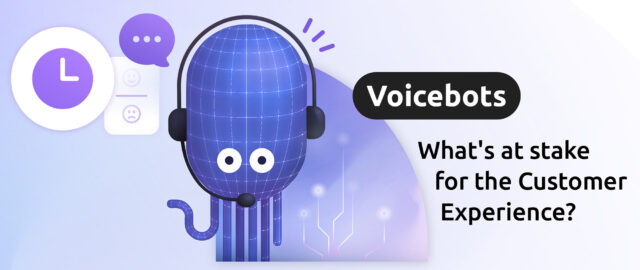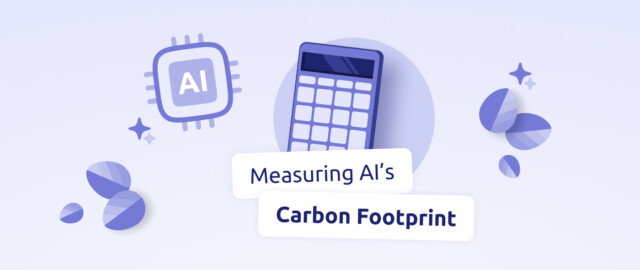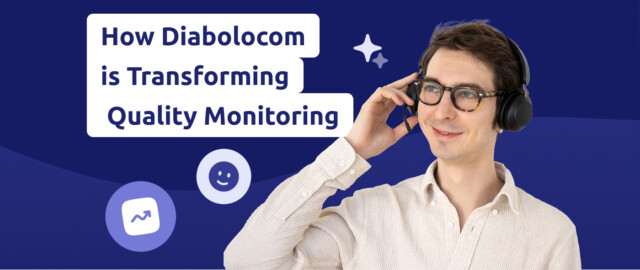What is a voicebot?
A voicebot is an intelligent virtual assistant that facilitates voice-based interactions between brands and their customers. Unlike chatbots, which communicate primarily via text messages, voicebots leverage advanced speech recognition technologies to understand users’ verbal requests. This ability to process natural language offers users more natural and engaging exchanges. This explains the success of voicebot-based technologies such as Alexa, Siri, and Google Assistant.
How does a voicebot work? To understand this, let’s take a fictitious example. Imagine a voicebot named “Eva” integrated into an airline’s customer service department. A customer wishes to contact customer service to inquire about the status of his flight. He comes across Eva, who thanks to her ability to understand and process natural language, immediately recognizes the customer’s request. She consults the flight data in real-time and informs the customer that his flight is on time. She even exceeds the customer’s expectations by providing gate information.
This example illustrates the two main advantages of using a voicebot:
- Customer benefits: improve the customer experience by providing users instant, personalized answers to their simplest requests.
- Business benefits: automate somecustomer interactions, enabling contact center agents to concentrate on higher value-added tasks.
Voicebots should be distinct from chatbots , although they do share some common features. Both technologies are conversational interfaces using artificial intelligence to interact with users. However, the fundamental difference lies in the mode of communication:
- Voicebots enable voice interaction, providing a more natural and immersive user experience like human conversation.
- Chatbots, on the other hand, operate via text interfaces. Users must use their keyboard to communicate with a chatbot.
Because it’s quicker and more natural to speak than to write, voicebots, for contact centers and customers alike, are a step ahead of text-based assistants.
What’s a voicebot for?
Voicebots are used to optimize and automate interactions between companies and their customers. They offer users a solution that is fast, efficient, and available at all times. Their main advantage lies in their ability to significantly improve the customer experience while reducing call center workloads.
Here are some of the main use cases for voicebots:
- 24/7 customer service: Companies use voicebots to guarantee continuous support.These virtual assistants can answer common questions instantly, at any time of the day or night. This capability provides customers with constant access and reduces their need to wait for a response from a human agent.
- Appointment scheduling: Voicebots can simplify scheduling by interacting directly with customers. They identify available slots and schedule appointments without human intervention. This automation improves the efficiency of the appointment scheduling process and increases customer satisfaction thanks to the simplicity and speed of the service.
- Order management: From placing orders to checking delivery status, voicebots automate all or part of the ordering process. They enable customers to place orders by voice and receive real-time updates on the status of their deliveries.
- Technical support: By offering first-level technical support, voicebots can help solve common problems users encounter. A study showed that by 2023, no less than 88% of customers had first-hand recourse to a chatbot or voicebot to obtain answers to their support requests, according to an article by Tidio.
- Satisfaction surveys: Following interactions with the contact center, voicebots can be used to solicit customer feedback on the quality of service received. This is a way for the company to continuously collect valuable feedback to improve their services.
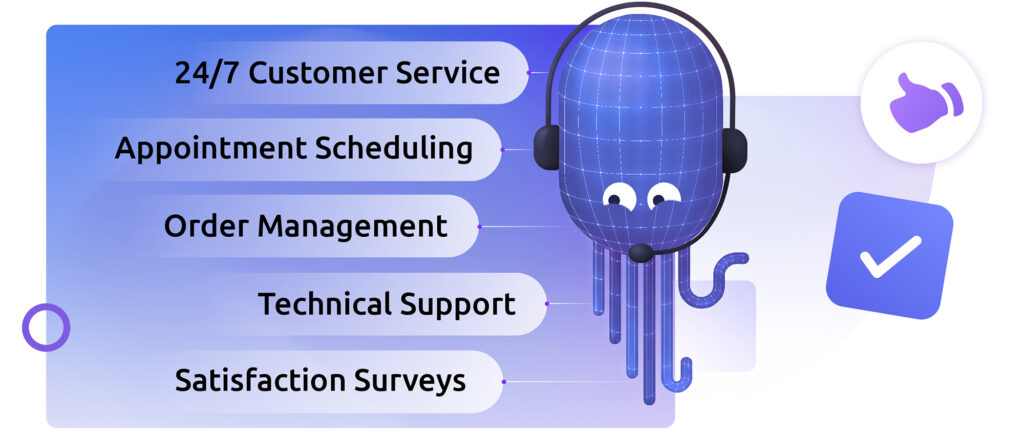
Voicebots can be used in a variety of ways, particularly in contact center management. This is why Diabolocom has chosen to integrate the voicebot into its call center management solution.
The voicebot, is a modern tool for enriching the customer experience
Voicebots, which are constantly being perfected thanks to technological advances, today represent a valuable tool for improving the customer experience.
Artificial intelligence and natural language processing
Voicebots have been around for many years, but today, we are witnessing a dual phenomenon:
- Democratization of voicebot technologies. The cost of deploying a voicebot has fallen overall, enabling a greater number of companies to equip themselves with this technology without having to make major R&D investments, by relying on customizable solutions like the one offered by Diabolocom.
- Further development of voicebots thanks to ongoing advances in artificial intelligence and the development of specific use cases, such as the management of requests for assistance. Voicebots are getting closer and closer to the quality of human interactions.
The evolution of voicebots relies heavily on progress made in the fields of artificial intelligence (AI) and natural language processing (NLP), which have improved both the ability to understand user requests and the quality of the answers provided, both in terms of content (answers) and form (language and voice quality).
Natural language processing, in particular, plays a key role in enabling voicebots to decode human language in all its complexity and nuance. NLP transforms speech into text, analyzing the meaning and context of the query before the AI formulates a relevant response. This technology enables voicebots to handle a wide range of simultaneous queries, from the simplest to the most complex, providing answers that sound natural and human.
Modern voicebots are also based on machine learning, which enables assistants to learn from past interactions. This learning capacity enables voicebots to provide increasingly relevant and precise responses to users.
As a result of these continuous improvements linked to technological advances, voicebots are now one of the key tools for enhancing the customer experience.
Multi-channel integration
Multi-channel integration represents a significant evolution in the use of voicebots. It broadens the scope of voicebots and their impact on the customer experience. Improved voicebot integration capabilities make it possible to deploy this technology across a company’s various communication channels: telephone, mobile application, websites, connected objects, etc.
The aim is to provide a consistent, fluid user experience, whatever channel the customer uses to interact with the company. This ability to blend into the user’s ecosystem modernizes the customer service approach: assistance becomes accessible to the customer anywhere, anytime, on any channel.
Practical applications of voicebots
Voicebots have many practical applications in the field of customer experience. Here are just a few examples of how voicebots enrich the customer experience:
- Personalization on a grand scale: by leveraging customer data and machine learning, voicebots can offer highly personalized advice and recommendations. In e-commerce, this can translate into purchase suggestions based on the customer’s history and preferences.
- Assistance in mobility situations: voicebots enable users to access services and information hands-free, without a keyboard, which is particularly useful in situations where using a screen is impractical or for people with motor disabilities that prevent them from using a keyboard.
- Efficient emergency management: In sensitive sectors such as healthcare or financial services, voicebots offer a rapid access channel for urgent requests. They can guide users through emergency procedures or facilitate rapid contact with professionals.
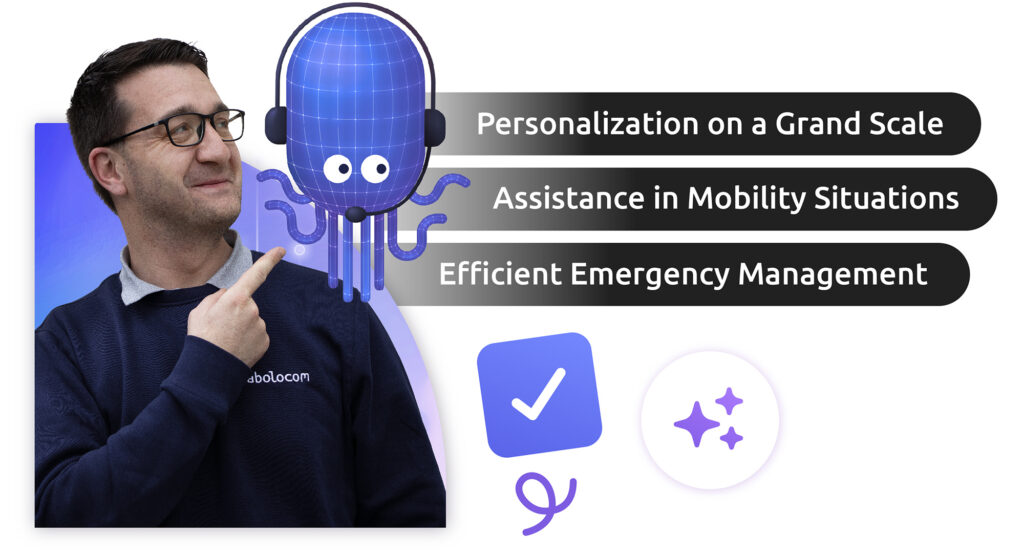
These applications show that voicebots are not just tools for answering question, but virtual assistants capable of actively enhancing the customer experience across a variety of scenarios.
Enhanced customer experience
All the above examples illustrate how voicebots represent a major step forward in improving the customer experience.
At the crossroads of technology and customer service, voicebots are redefining consumer expectations and setting new standards for customer satisfaction. By making services more responsive, voicebots help create a frictionless user experience where requests are handled efficiently and empathetically.
One of the major advantages of voicebots for the customer experience is their constant availability. Unlike traditional services limited by working hours, voicebots offer 24/7 support. Customers can receive the help they need at any time. This maximum availability ensures continuity in the customer experience and eliminates any frustrations associated with waiting.
Voicebots are not only available, they’re also relevant. Technological advances now make it possible to offer users highly personalized responses. Thanks to the integration of AI, voicebots can tailor their responses to the specific context of each customer, offering customized solutions that go far beyond generic answers.
The impact of voicebots on businesses
Integrating a voicebot represents several advantages for companies. It contributes to the organization’s digital transformation, helps automate specific low-value-added tasks, and represents a major competitive advantage.
Voicebots & digital transformation
The digital transformation driven by voicebots extends far beyond improving the customer experience. Voicebots help to optimize internal processes, reduce operating costs, and develop a culture of customer data exploitation.
The automation of customer interactions offered by voicebots translates into a significant increase in productivity for companies and contact centers. Agents can concentrate on higher value-added interactions. This reallocation of tasks not only improves team satisfaction, by avoiding the exhaustion associated with the repetitiveness of certain tasks but also increases the quality of service delivered to the customer: customers benefit from fast, accurate assistance for their simple requests, while having the option of contacting qualified human support for more complex questions.
The ability to add value to customer data has become a key issue for companies. Deploying a voicebot is also an opportunity to rethink the way companies collect and exploit customer data. Voicebots contribute to the development of a data-centric corporate culture.
Automating tasks and boosting productivity, modernizing processes, and making better use of customer data: the implementation of a voicebot contributes to the (digital) transformation of companies.
Competitive advantage of voicebots
What’s more, integrating a voicebot is a competitive advantage that sets us apart in an increasingly demanding market.
The ability to offer quality customer service at any time, thanks to the voicebot, boosts customer satisfaction. As we all know, improving customer satisfaction and experience has become a key objective in differentiating a company from its competitors and building customer loyalty.
The improved operational efficiency that results from automating specific repetitive tasks and reducing the workload of customer service agents not only saves money but also enables human resources to be reallocated to more strategic activities. Here again, this represents a competitive advantage – an advantage that is all the more attractive given that companies using voicebots are still in the minority.
Finally, the adoption of a voicebot demonstrates a company’s commitment to innovation and technology. This translates into an enhanced brand image that attracts both more customers and more talent.
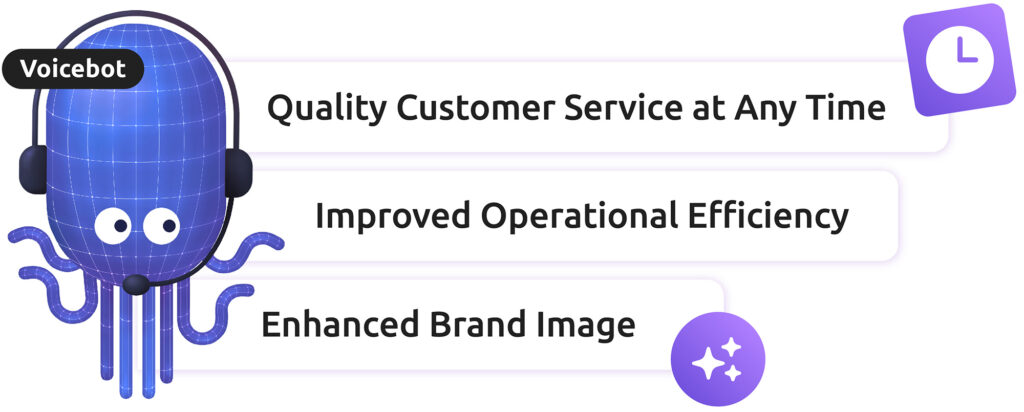
Conclusion
Voicebots are gradually becoming an integral part of everyday life and have a bright future ahead of them. Shortly , technological advances will make voice assistants increasingly helpful and practical for both customers and businesses.
Voicebots are not intended to completely replace human interaction in the customer service department. Their main strength lies in their increasingly efficient handling of simple, repetitive requests. Like other self-care tools, voicebots free up time for contact center agents, who can then concentrate on more complex requests. Far from competing with human agents, voicebots offer a complementary service, each playing its part in enhancing the customer experience.
Convinced of the benefits of this technology, Diabolocom was quick to integrate the voicebot into its contact center management solutions. If you’d like to find out more about the voicebot we offer, we invite you to get in touch with our teams and book a demonstration. You’ll be able to understand precisely what our voicebot can provide your company and your customers.
Curious to know more about Diabolocom?
